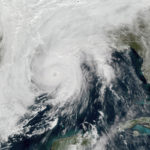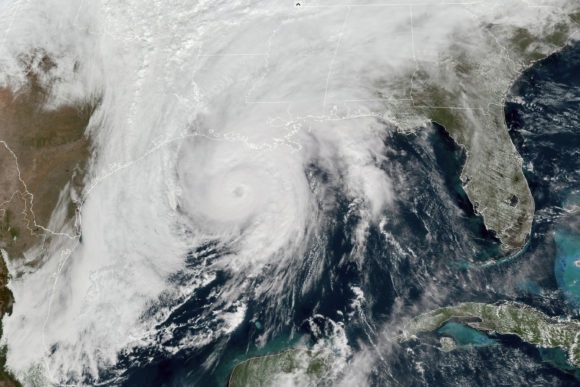Catastrophe risk modeler RMS has estimated that insured on losses from Hurricane Zeta could rise to as high as $5 billion in the U.S.
That figure is slightly higher than estimates announced by catastrophe modelers AIR Worldwide, CoreLogic and Karen Clark & Co.
RMS estimates insured Zeta losses to between $3 billion and $5 billion, figures that include losses to the National Flood Insurance Program (NFIP) of between $200 million and $300 million.
KCC estimated Zeta insured losses could top out at $4.4 billion, a figure that includes losses expected in Mexico. CoreLogic estimated an insured loss high of $4 billion and AIR Worldwide, $3.5 billion.
The RMS estimate includes wind and storm surge losses across the impacted states, including Louisiana and Mississippi, based on analysis of RMS ensemble footprints in Version 18.1 of the RMS North Atlantic Hurricane Model. RMS ensemble footprints are reconstructions of Zeta’s hazards that capture the uncertainties surrounding observed winds and storm surge.
Losses associated with inland flooding are expected to be negligible, due to Zeta’s fast forward speed post-landfall, which kept high rainfall totals to isolated areas.
The RMS estimate includes a 5% reduction in possible insured onshore losses due to the cumulative impacts of Hurricane Sally, which damaged some of the same region earlier this season. That is, if Sally had not previously damaged certain properties that were vulnerable to Zeta, there would have been 5% more exposure to Zeta.
“We do expect some overlap between Zeta and Sally as the industry settles losses from these two events, but not to the degree of Delta and Laura a few weeks ago,” Jeff Waters, senior product manager, RMS North Atlantic Hurricane Models, said in a media release.
RMS has estimated that “approximately 20% of zip codes impacted by Zeta were also impacted by Sally, particularly at lower wind speeds,” he said.
Losses reflect property damage and business interruption to residential, commercial, industrial, and automobile lines of business, along with post-event loss amplification (PLA) and non-modeled sources of loss. RMS expects most insured losses will be from residential lines.
NFIP estimated losses of $200 to $300 million were derived using the RMS view of NFIP exposure based on 2019 policy-in-force data published by the Federal Emergency Management Agency (FEMA), and the Version 18.1 North Atlantic Hurricane Models.
In Mexico, RMS estimates insured losses from Zeta to be minimal in Mexico, which has significantly lower rates of insurance take-up compared to the U.S.
Additionally, RMS estimates insured losses to offshore platforms, rigs, and pipelines in the Gulf of Mexico to not exceed $500 million from wind and wave-driven damages. While platforms in the Central Gulf of Mexico are built with higher deck heights to negotiate wave hazard, Zeta exposed a significant number of state lease platforms to high winds and waves along the Louisiana coast. Offshore losses are based on the October 2020 vintage of the RMS Offshore Platform Industry Exposure Database.
Zeta made landfall near Cocodrie, Louisiana on Oct. 28, with sustained winds of 110 mph. Hurricane Zeta was the 27th named storm of the 2020 North Atlantic hurricane season, the 11th hurricane, and the sixth U.S. landfalling hurricane. Zeta was the 11th named storm to make landfall in the contiguous U.S. so far in 2020, and a record-breaking fifth named storm of 2020 to make landfall in Louisiana.

RMS industry loss estimates for landfalling U.S. hurricanes are comprehensive, reflecting modeled and non-modeled impacts from all major drivers of damage, including wind, storm surge, and inland flooding.
Source: RMS
Topics Trends Catastrophe USA Profit Loss Louisiana Hurricane Mexico
Was this article valuable?
Here are more articles you may enjoy.



 Supreme Court Overturns Chevron Rule in Blow to Regulators
Supreme Court Overturns Chevron Rule in Blow to Regulators  Farmers Adjusters Cry Foul Over Workloads, Claims Handling in Letter to Regulators
Farmers Adjusters Cry Foul Over Workloads, Claims Handling in Letter to Regulators  German Insurtech Wefox to Replace CEO After Board Rejects Mubadala Sales Plan
German Insurtech Wefox to Replace CEO After Board Rejects Mubadala Sales Plan  GEICO Tops Progressive With Higher J.D. Power Scores
GEICO Tops Progressive With Higher J.D. Power Scores 

